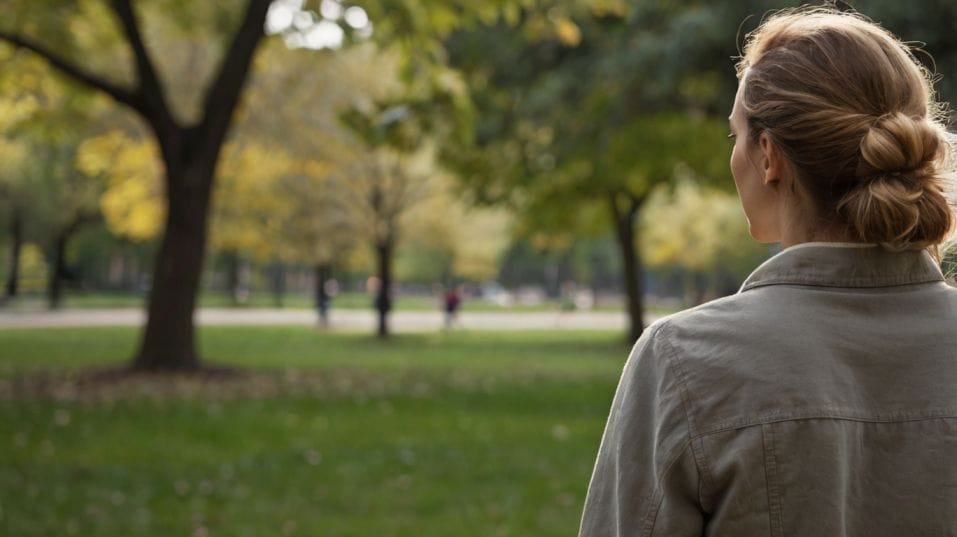How a Lunchtime Walk Can Improve Your Workday Focus
Discover how a lunchtime walk can improve focus, reduce stress, and boost creativity. Learn tips for making it a daily habit.

Ever feel like your brain hits a wall by midday? Instead of pushing through the slump, step outside. A lunchtime walk can refresh your mind, sharpen focus, and make the rest of your day more productive.
Research shows that walking boosts cognitive function, lowers stress, and increases energy—yet many professionals stay glued to their desks.
By taking just a few minutes to move, you unlock an effortless way to improve performance and well-being.
Why Walking at Lunch Boosts Productivity
A midday walk does more than just break up your routine—it actively enhances the way you think and feel.
By stepping away from your desk, you give your brain a much-needed reset, making it easier to tackle the rest of your day with clarity and focus.
Clears Mental Clutter and Reduces Stress
Staring at your screen for hours leads to mental fatigue, slowing down your thinking and reducing productivity. Walking resets your mind, reducing cortisol levels while triggering endorphins—the brain’s natural stress relievers.
This mental reset helps you return to work sharper and more focused, making complex tasks feel more manageable.
Long-term stress can also lead to chronic issues like burnout, anxiety, and decision fatigue. By incorporating a daily walk, you create a built-in stress management tool that strengthens resilience and improves overall work-life balance.

Sparks Creative Thinking
Stepping away from your desk allows your brain to process ideas subconsciously. The change of scenery stimulates fresh perspectives, often leading to unexpected insights.
Some of history’s most brilliant minds—including Steve Jobs, Charles Darwin, and Virginia Woolf—used walking as a thinking tool, believing it unlocked creative breakthroughs.
Studies show that walking increases activity in the default mode network (DMN) of the brain, which plays a role in idea generation and problem-solving.
When you take a stroll, your mind has the space to wander and make new connections that wouldn’t arise while sitting at a desk.
Lifts Your Mood and Motivation
Physical movement releases dopamine and serotonin, chemicals linked to happiness and motivation. A walk can shift your mindset, making daunting tasks feel more manageable and boosting overall engagement in your work.
Regular movement has also been linked to a lower risk of depression and higher job satisfaction, making it a powerful tool for workplace well-being.
Additionally, walking outdoors exposes you to natural light, which regulates melatonin production and keeps your energy levels steady throughout the afternoon.
This prevents the dreaded post-lunch slump, keeping you more engaged and alert.
How to Make Your Lunchtime Walk More Effective
Simply walking is beneficial, but small adjustments can maximize its impact. By being intentional about how you walk, you can turn a short break into a powerful tool for focus and relaxation.
Walk Without Distractions
Skip emails and social media. Instead, pay attention to your surroundings, your breath, and the rhythm of your steps.
This mindfulness practice helps clear mental fog and enhances relaxation. Studies have shown that even brief mindful movement exercises can significantly lower anxiety and improve focus.
Engage Your Senses
Notice the details around you—the temperature of the air, the sounds of nature, or the texture of the pavement beneath your feet. Tuning in to these small details anchors you in the present moment.
This practice, often called "grounding," has been used in cognitive behavioral therapy (CBT) to help reduce stress and promote emotional balance.
Sync Your Breathing
Deep, intentional breathing amplifies the benefits of walking. Try inhaling for four steps and exhaling for four steps to calm your nervous system and enhance mental clarity.
Alternatively, experiment with box breathing (inhale for four, hold for four, exhale for four, hold for four) to further relax the mind and body.
Seek Out Green Spaces
Parks, tree-lined streets, or any nature-filled route can maximize the stress-reducing effects of your walk.
Natural environments have been shown to lower blood pressure, reduce stress hormones, and improve focus more effectively than urban settings.
The Japanese practice of "Shinrin-yoku" (forest bathing) highlights how spending time in nature can lower stress levels and improve overall health.
Use the Time for Reflection
If structured thinking helps you, consider using your walk to brainstorm solutions or mentally plan your next steps.
Distance from your desk often leads to unexpected breakthroughs. Keep a voice memo app handy to capture insights without disrupting your stride.
Making Lunchtime Walks a Daily Habit
The benefits of walking are clear, but consistency is what turns it into a game-changing habit. A few simple strategies can help you make it a non-negotiable part of your workday.
Block the Time
Schedule your walk just like a meeting. Treating it as a non-negotiable part of your day ensures consistency.
Research shows that creating a specific implementation plan (when, where, and how) increases the likelihood of following through with a new habit.
Walk with a Colleague
A walking meeting or casual stroll with a coworker fosters collaboration while reinforcing the habit.
Walking meetings have been found to boost creative thinking and improve interpersonal connections, making them a valuable tool for team productivity.
Start Small and Build Up
Even five minutes is better than nothing. Over time, you may find yourself extending your walk naturally as you experience the benefits.
The key is consistency. A short walk every day is more beneficial than a long walk once a week.
Keep Walking Shoes Handy
A simple barrier—like uncomfortable shoes—can keep you from stepping outside.
Keep a comfortable pair at your desk to remove excuses. If possible, opt for supportive footwear designed for walking to prevent discomfort and enhance your experience.
Pair It with Another Habit
Linking your walk to an existing habit increases the likelihood of sticking with it. For example, walk right after lunch or combine it with listening to a podcast, audiobook, or calming music.
Habit stacking—a concept from behavioral psychology—suggests that pairing a new behavior with an existing routine strengthens long-term adherence.
Final Thoughts
A lunchtime walk isn’t just a break—it’s a strategy for better focus, reduced stress, and increased creativity. Small, consistent changes lead to lasting improvements in productivity and well-being.
Over time, this simple habit can transform your workday, making tasks feel easier, ideas flow faster, and stress feel more manageable.
Step away from your desk today. Take a walk, breathe deeply, and see how even a few minutes of movement can reset your mind and enhance your work performance.




